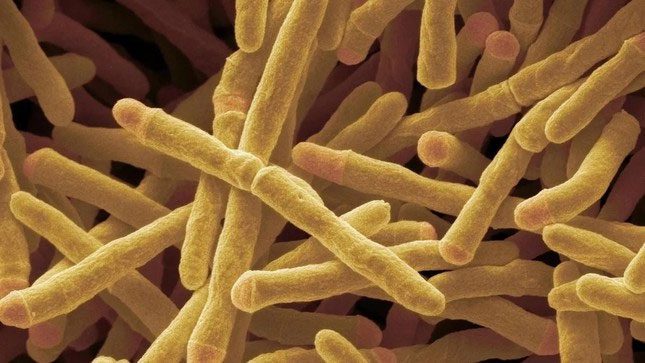By extracting and studying enzymes, researchers have discovered a new energy source that can power a range of small handheld devices.
Scientists studying relatives of the bacteria that cause tuberculosis and leprosy have identified an enzyme capable of converting hydrogen into electrical energy, which can be harnessed to create a new clean energy source from thin air.

Scanning electron microscope image of a bacterium that can use hydrogen from the atmosphere to generate electricity.
The enzyme, named Huc, is utilized by Mycobacterium smegmatis to extract energy from atmospheric hydrogen, enabling it to survive in harsh, nutrient-poor environments.
The lead author, Rhys Griter, a microbiologist at Monash University in Australia, stated: “When you provide Huc with a more concentrated hydrogen source, it generates more electricity. This means you could use its battery to power more complex devices, such as smartwatches or smartphones, laptops, and even cars.”
M. smegmatis is a non-pathogenic bacterium that grows rapidly and is often used in laboratories to study the cell wall structure of its closely related pathogenic counterpart, Mycobacterium tuberculosis.
Commonly found in soil around the world, M. smegmatis has long been recognized for its ability to convert atmospheric hydrogen into energy. In this way, the bacterium can thrive in some of the harshest environments, including Antarctic soil, volcanic vents, and the deep oceans, where little other fuel can be found, researchers noted.
By bombarding a frozen sample of Huc collected from M. smegmatis with electrons, researchers mapped the atomic structure of the enzyme and the pathways it uses to transport electrons, generating an electric current.
Further experiments revealed that the isolated Huc enzyme can be stored for extended periods; it remains stable when frozen or heated to up to 80 degrees Celsius. It can consume hydrogen at extremely low concentrations, as low as 0.00005% of the concentration found in the air we breathe.
Researchers believe these properties, along with the prevalence and ease of cultivation of the bacterium, could make the enzyme an ideal candidate for energy sources in organic batteries.


















































